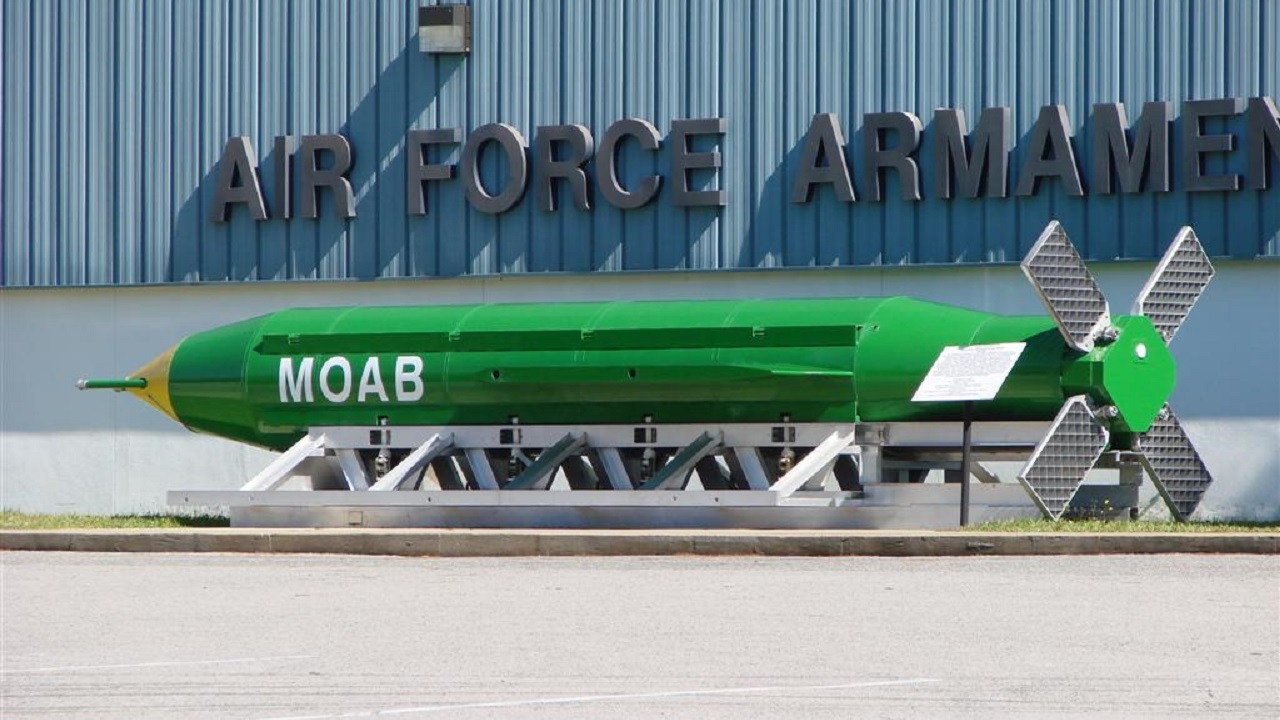Ordnance development has followed a mostly predictable path through human history. Namely, bigger is better. From cannons able to lob larger shots to exploding shells to massive artillery pieces on battleships and finally bombs, those involved with designing explosives have mostly striven for a bigger boom. This certainly holds true of the GBU-43/B “MOAB” of the U.S. Air Force.
The Origin Story
During the Vietnam War, the Air Force developed the BLU-82 or “Daisy Cutter” for use in Southeast Asia. The heavy jungle coverage made finding helicopter landing zones or suitable artillery emplacements difficult; the solution was to simply make clearings with a bomb. The Daisy Cutter weighed 15,000lbs, of which 12,600lbs were water-gel explosive slurry. A bomb of this size is far too large – nearly 12 feet long – and heavy to be carried by conventional bomber or attack aircraft. As such, it was delivered out of either a C-130 transport aircraft or CH-54 heavy lift helicopter.
The BLU-82 was used to great effect many times during the Vietnam war, both in its intended mission of clearing forest and as an effective conventional strike on ground forces or structures. Five Daisy Cutters were employed during Operation Desert Storm in 1991. In November of 2001, in the opening days of the conflict in Afghanistan, U.S. forces used several of these bombs on difficult to reach targets. Seeing these successes, the Air Force began developing the successor to the BLU-82.
The MOAB is bigger and better
Following the employment of the Daisy Cutter in Afghanistan, the Air Force began looking to upgrade its guidance and control systems. This would have the twofold benefits of allowing delivery aircraft to fly higher, decreasing their threat environment, as well as increasing the accuracy and survivability of the bomb, allowing it to be used in more mission sets.
Specs and capabilities
The result was the Massive Ordnance Air Blast (MOAB). As explained by the Air Force, “The guided bomb unit-43/B Massive Ordnance Air Blast bomb is a 21,600 pound, Global Positioning System-guided munition with precision guidance and architecture to be delivered accurately to enemy forces with the main intention of permanently disabling them. The goal was to put pressure on then-Iraqi dictator Saddam Hussein to cease and desist United Nations violations.” Often referred to as the “Mother of All Bombs”, the GBU-43B is truly massive. With a length of 30 feet and its hefty weight, this bomb is the largest conventional weapon in the U.S. Military arsenal. Technological advances mean its extra weight comes with significantly more punch. Its explosive filling of organic chemical compounds and TNT give it a yield equivalent to 11 tons of TNT.
Like its predecessor, the MOAB is far too big for conventional delivery from attack or bomber aircraft. Instead, it is loaded on cradles mounted on a platform in a C-130 variant for use. Once over the target, the loadmaster opens the cargo door, allowing drogue parachutes to pull the entire cradle-and-platform apparatus out of the aircraft. Once clear of the aircraft, the delivery system falls away and shortly after the parachutes detach. Following release, the bomb uses GPS guidance, with fixed fins and internal gyros allowing it to guide itself onto the target.
The U.S. military used the “Mother of All Bombs” for the first time in 2017 to counter ISIS targets in Afghanistan.
MORE: Joe Biden Won’t Send F-16 Fighters to Ukraine
MORE: Why Putin Should Fear the F-16 Fighter
Maya Carlin, a Senior Editor for 19FortyFive, is an analyst with the Center for Security Policy and a former Anna Sobol Levy Fellow at IDC Herzliya in Israel. She has by-lines in many publications, including The National Interest, Jerusalem Post, and Times of Israel. You can follow her on Twitter: @MayaCarlin.

